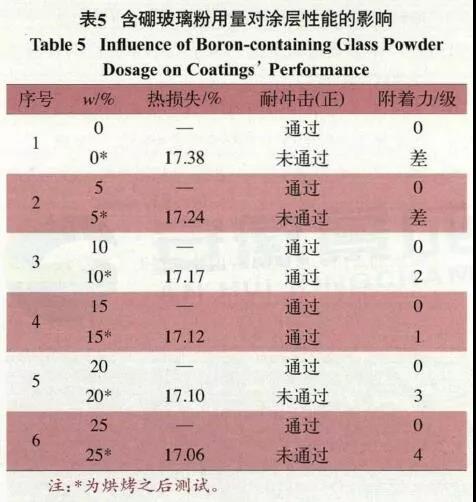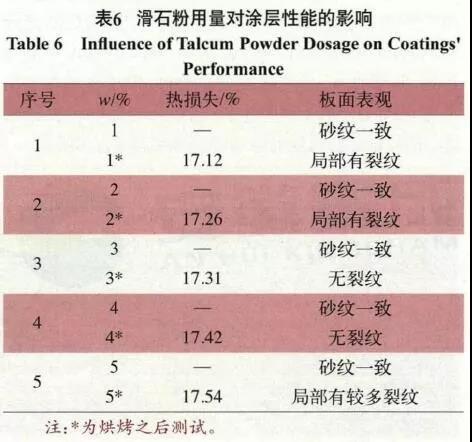Study on high temperature resistant silicone / epoxy resin powder coating for automobile exhaust pipe
2.2 effect of different amount of silicone resin and epoxy resin on the performance of high temperature resistant powder coating
Prepare the powder coating according to the steps in 1.3.3, change the amount of silicone resin and epoxy resin under the conditions of curing temperature of 230 ℃, curing time of 30min and the mass of other components unchanged, and bake the coating at high temperature of 600 ℃ for 1h, and the test results are shown in Table 4.
The bond energy of silicon oxygen bond (Si-O) is 425kj / mol, while that of carbon oxygen bond (C-O) is 351kj / mol, and that of carbon carbon bond (C-C) is 345kj / mol. Because the high temperature resistant powder coating in the market is mainly sand grain type, and the compatibility between epoxy resin and silicone resin is poor, sand grain will be formed, and the production cost can be reduced, so epoxy resin is added in this paper.
It can be seen from table 4 that before high temperature baking, the mechanical properties of all coatings are good, impact resistance and adhesion meet the application requirements; however, after high temperature baking, with the increase of the amount of epoxy resin, the heat loss of the coating also increases, and the heat loss is only 1-2 percentage points higher than that of the epoxy resin in the relative formula, so it can be confirmed that under high temperature conditions, the epoxy resin is fully Partial loss: when the amount of silicone resin is more than 45%, the high temperature resistance and mechanical properties of the coating are good, and the color difference before and after baking Δ e < 2, which can fully meet the market demand; when the amount of silicone resin is less than 45% (mass fraction, the same later), the heat loss of the coating after baking is too large, resulting in poor mechanical properties of the coating, and the coating will touch The coating color changes from black to grayish red. So in the next experiment, the ratio of silicone resin and epoxy resin was fixed at 45:15.
2.3 effect of boron containing glass powder content on high temperature resistance of coating
After comparison, it is found that the cost performance and performance of boron containing glass powder are more suitable for high temperature resistant powder coating, so this paper uses boron containing glass powder. The effect of different amount of boron containing glass powder on the coating performance is shown in Table 5.

It can be seen from table 5 that with the increase of the amount of boron containing glass powder, the heat loss of the coating decreases, while the mechanical property of the coating increases and then decreases. When the amount of boron containing glass powder is 5%, the heat loss is 17.38%, but the coating performance is poor: with the increase of the amount, the mechanical properties and heat loss of the coating are gradually reduced; when the amount is higher than 13%, the heat loss of the coating is decreasing, but the mechanical properties of the coating are poor. Low melting point boron containing glass powder melts at high temperature, which has a certain bonding effect, but when the amount is small, the bonding effect is not obvious. If the amount is too much, the coating toughness is insufficient, and the mechanical property is reduced. 10% (mass fraction) of boron containing glass powder is considered comprehensively.
2.4 effect of talc content on coating performance
Talcum powder has a lamellar structure, which has a good anti cracking performance of coating under high temperature. The lamellar mechanism can give the coating a certain impact resistance, and the van der Waals force between layers is weak, so adding a proper amount of talcum powder is conducive to improving the mechanical properties of the coating. The effect of different talc content on the coating performance is shown in Table 6.

It can be seen from table 6 that with the increase of the amount of talcum powder, the heat loss increases gradually. This is because there is bound water in talcum powder, so the more the amount is, the greater the heat loss of the coating is: the apparent performance of the coating increases first and then decreases with the increase of the amount, so the next experimental selection of the amount is 3% (mass fraction).
Wen / LV Ying 1, bu Qingpeng 2, Wang Xiaoqiang 2, pan Jianliang 2

